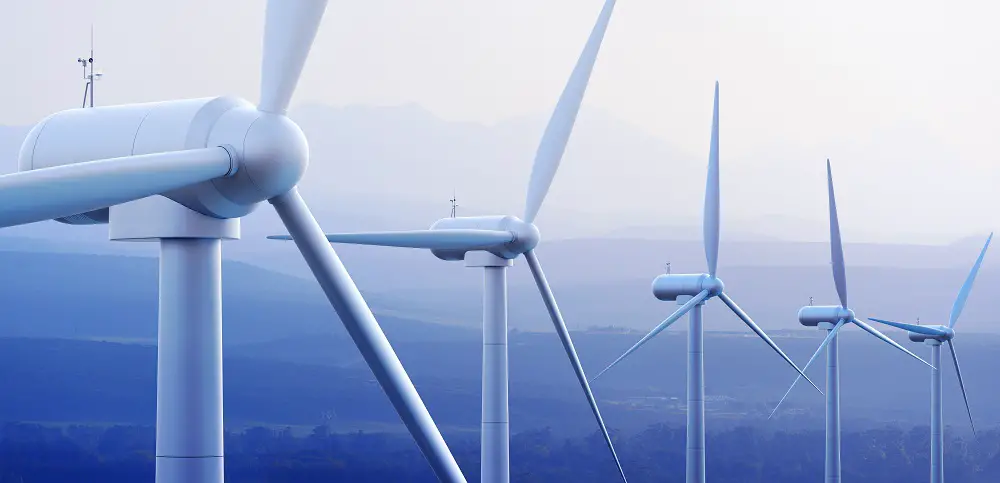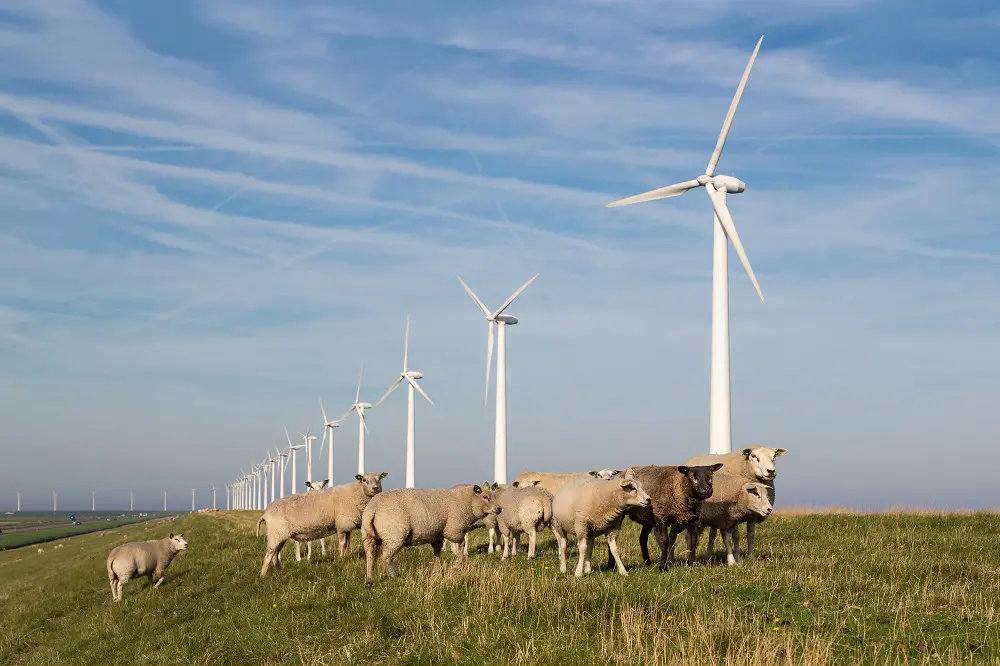Shadow flicker is a visual effect caused when the sun casts a shadow of rotating wind turbine blades across a building (see illustration).

When viewed from inside the building, as the turbine blades rotate they cast shadows that repeatedly cause a regular, intermittent light-dark-light-dark effect as they pass a window, door or other opening, and this is referred to as Shadow Flicker.
How Often Shadow Flicker occurs
Shadow Flicker is a rare occurrence. The vast majority of wind farms do not exhibit this effect since construction regulations ensure that large, grid-scale wind turbines cannot be installed too close to a built up area, which restricts the opportunities for it to happen.
The effect is only caused when a particular combination of environmental factors coincide in specific locations during limited times of the year. The sun has to be at a precise position and angle in the sky for the shadow of the rotating blades to hit a particular building. The effect would then only be observable through any particular window in that building for a limited number of minutes per day, as the sun rises or sets.
A 2011 study carried out for the UK Government identified only one case of shadow flicker in the UK, with the report concluding that “there have not been extensive issues with shadow flicker in the UK”.1
Detrimental effects of Shadow Flicker
However, for any unfortunate homeowners whose house happens to be in a position where shadow flicker occurs, the regular light-dark flashing effect can be a distracting nuisance when it occurs, causing a detrimental impact on the residents.
Shadow flicker has also been cited in a court case in Ireland against a wind turbine operator. In the case, it was claimed shadow flicker from a nearby wind farm was a contributing factor to residents feeling unwell, causing them to move out of their property in 2016.2
There was some concern that the pulsating effect of the light during shadow flicker could be a risk factor to people who suffer from any form of photo-epilepsy. Photo-epilepsy is a medical condition that causes people to experience seizures when exposed to rapid flashing lights. Medical research shows that flicker rates below three flashes per second (120 per minute) have a very low risk of inducing seizures in people who have this photo-sensitivity.3
Modern grid-scale wind turbines rotate at a maximum rate of 20 revolutions per minute (rpm). With three blades rotating, that means the flicker rate would be never be greater than 3 x 20 = 60 flashes per minute, far below the threshold that would risk causing seizures.
The 2011 UK Government study referred to previously, concluded that: “the frequency of the flickering caused by the wind turbine rotation is such that it should not cause a significant risk to health.
Solutions for Shadow Flicker
There are actions that can be taken to mitigate the effects of shadow flicker. Because shadow flicker can only occur for brief periods of time during limited times of the year, the turbines can simply be shut off for those periods, thereby eliminating any possibility of shadow flicker.
Additionally, when planning sites for new wind turbine installations, computer modelling simulations are now used that accurately calculate the position of the sun in the sky at different times of the year, enabling wind turbine operators to avoid installing turbines in locations where they would cause shadow flicker.
Most countries now have zero-tolerance planning regulation policies around shadow flicker from wind farms. For example, in the US, standard building regulations control commercial wind farm installation, stating that operators must “prevent, mitigate and eliminate shadow flicker on any roadway or any occupied structure on a non-participating property.”4
Over the past decade shadow flicker and its impact has become better understood, meaning it is designed out of all future on-shore wind farm installations.
References
2. https://www.irishtimes.com/




